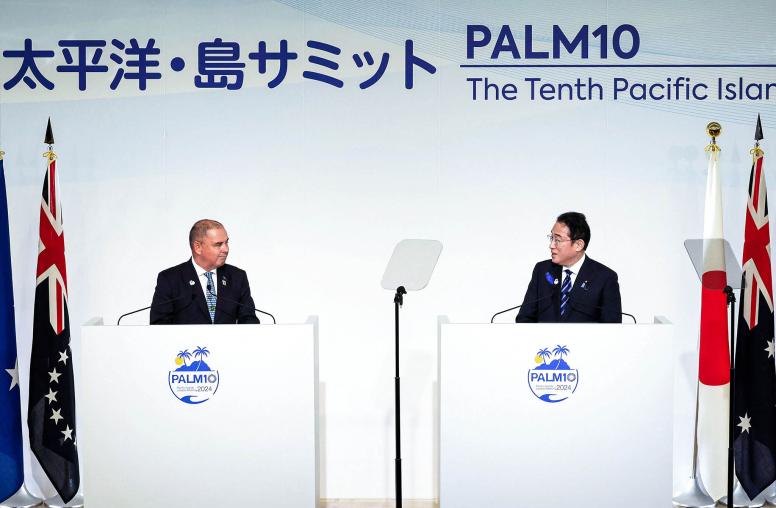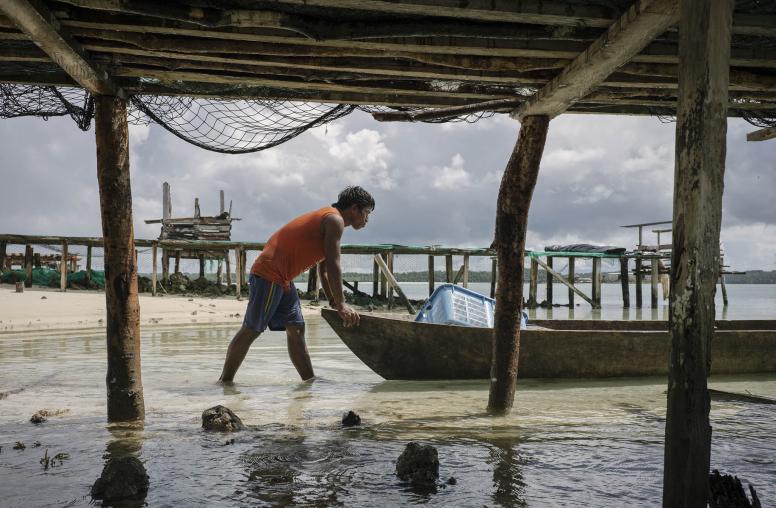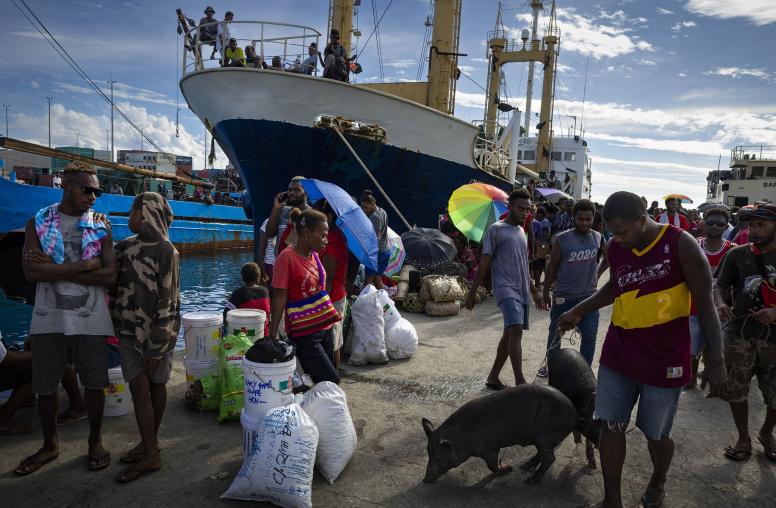It’s Time for an All-Out War on Explosive Remnants in Solomon Islands
Eighty-one years after the Guadalcanal campaign, the U.S. should commit to cleaning up unexploded and abandoned ordnances.
On August 7, U.S. military personnel, diplomats and civilians will gather at the WWII American Guadalcanal Memorial to mark the 81st anniversary of the U.S. Marine landings. Two days of planned commemorative events will include speeches, wreath laying and gatherings to honor the valor of those who fought and the sacrifices of those who never came home. But too often, U.S. attendees return home from this annual commemoration without leaving a lasting footprint in the Solomon Island sand.

Despite past affirmations of “enduring friendship” and “shared history” between the United States and the Solomon Islands, one issue has unfortunately gone overlooked: the legacy of explosive remnants of war (ERWs). There are still ERWs scattered across the land and sea in Solomon Islands, leftover from the same World War II battles that we commemorate each year.
This year will be different. The United States already signed a contract with The HALO Trust in December 2022 to determine the full extent of contamination from ERWs in Solomon Islands, and that process is currently underway. But more funding — and a long-term commitment to remove and dispose of ERWs — is desperately needed. This year’s Guadalcanal U.S. Marine landings commemoration is a perfect opportunity for the United States to signal it is reengaging in the region by announcing an all-out war on ERWs in Solomon Islands by setting a goal of clearing them over the next decade.
Legacy of Explosive Remnants of War
Eight decades later, these ERWs still pose a dangerous threat. Every year, more than 20 people are killed and even more are injured by ERWs in Solomon Islands. The danger isn’t just from unintended explosions, either. Over time, and with corrosion, the markings on the steel casing of ordnances can become illegible, making it difficult to know what it contains. Some EWRs contain mustard gas, breakdown products or conventional explosives, and handling them can result in burns from leaking chemicals even if they do not explode.
These numbers are also likely an underestimate. There is no formal database of injuries from ERWs, as reporting “confirmed” or “suspected” injuries from ERWs is not required in Solomon Islands.
The practice of harvesting potentially unstable explosives from abandoned WWII dump sites is used in blast fishing. Blast fishing is when a detonation is set off near a reef that stuns and kills reef fish. The practice has resulted in injury and death to fisherman as well as destruction of fragile coral reefs and fish stocks.
Based upon the 2003 U.N. Protocol on Explosive Remnants of War, the United States is operating within the protocol’s definition. But is the United States committing enough financial resources and manpower to definitively resolve the issue in Solomon Islands?
A New Commitment to Removing Explosive Remnants of War
From 2011 to 2019, the State Department committed a total of $6.8 million toward addressing ERWs in Solomon Islands. The initial efforts started a training program on explosive ordnance disposal (EOD) for members of the Royal Solomon Island Police Force (RSIPF).
The RSIPF EOD team has been certified by Australia’s Defense Force and has disposed of over 42,000 ERWs since 2011. But while these are significant accomplishments, it must be noted the RSIPF EOD program is largely reactive, responding to reports of found ERWs. Since this relies on people reporting, the discovery and use of ERWs in illegal blast fishing has resulted in an underrepresentation of the extent of the problem.
Rather than rely on reporting, The HALO Trust’s $1 million contract with the State Department aims to locate and mark ERWs for removal.
That work is ongoing, having just started in June. The Halo Trust team is currently surveying heavily populated areas in and around Honiara on Guadalcanal — places where focused removal can prevent catastrophes from occurring during everyday activities like gardening and barbecuing.
The data from The HALO Trust and the EOD team is just beginning to uncover the density of ERWs in Honiara, and an approximation of the problem’s scale is starting to come into view. Before construction began on the Pacific Games stadium in Honiara, 60,000 square meters of land were cleared over two months. This sub-surface clearance yielded more than 8,000 items — ranging from canon rounds to artillery shells.
Declaring All-Out War Against ERWs
Based on The HALO Trust’s initial work on the density of ERWs contamination, the State Department has indicated more funding is coming.
But any new funding must include the establishment of a database on the direct health impacts to Solomon Islanders from ERWs. Some of this data can be backfilled through media reports and collecting stories while visiting villages. The Solomon Islands government, for its part, should make reporting ERWs accidents mandatory.
With adequate manpower and increased funding, work can be done simultaneously in the five most contaminated sites in the country: northern Guadalcanal, New Georgia, Vella Lavella, Tulagi, and the Russell Islands. That would allow for mapping to be completed within two years, according to Simon Conway, The HALO Trust’s head of program development. Such a concerted program in Solomon Islands can be applied to other Pacific Island countries who are also dealing with ERWs.
With China’s increasing influence in the Pacific region, in particular Solomon Islands, definitively addressing the ERW problem allows the United States to make good on a promise to reengage in the region by directly addressing an issue the people of Solomon Islands want addressed. A commitment to definitively clear ERWs is one way U.S. diplomatic and government attendees can leave a lasting footprint in the Solomon Island sand following this year’s commemoration ceremonies.
I would like to acknowledge input from Simon Conway, HALO Trust, the RSIPF and Australia Defense Force.
Dr. Eileen Natuzzi has worked on health capacity building in the Solomon Islands for 19 years. She is an affiliate of Georgetown University’s Center for Australian, New Zealand and Pacific Studies and serves as the Solomon Islands co-coordinator for the Australia New Zealand Gastrointestinal International Training Association.





